The 41st bread in the BBA Challenge is 100% Whole Wheat Bread. Some of the other bakers in the challenge commented that this bread was not one of their favorites, but I still had high hopes for it because I really like to make whole wheat bread and I thought using freshly milled grains would make a difference.
The book states that the best way to evoke flavor in whole grain breads is to give the enzymes enough time to break out the sugars trapped in the starches. This can be done by using a large amount of pre-ferment, such as a poolish or soaker. This formula utilizes both types of pre-ferments so I thought certainly this combination would produce a good loaf of whole wheat bread.
So, I set out to make a loaf of 100% whole wheat bread.
Making the Soaker and Poolish
For the soaker, I used fresh coarsely-milled whole wheat flour from hard red spring wheat and mixed it with spring water.
Cover the bowl with plastic wrap and let it sit at room temperature overnight until you’re ready to bake the bread.
For the poolish, I used freshly milled whole wheat bread flour milled from hard red spring wheat and mixed it with some yeast and water.
Cover the bowl with plastic wrap and let it ferment at room temperature for 2 to 4 hours, until it bubbled. Then put it in the refrigerator overnight.
Making the Dough
The next day, remove the poolish from the refrigerator 1 hour before you plan to bake the bread to take of the chill.
Stir together the dry ingredients. Add the poolish and the soaker, and the liquid ingredients and mix the dough until it forms a ball, adding more water or flour as needed.
Transfer the dough to a counter sprinkled with whole-wheat flour and knead the dough until it forms a firm, supple dough. This will take about 10 to 15 minutes by hand. The dough should be tacky not sticky.
Fermenting the Dough
Transfer the dough to a lightly oiled bowl and roll it around in it to coat it with oil. Cover the bowl with plastic wrap. Ferment at room temperature for about 2 hours, or until the dough doubles in size.
Shaping the Loaves
Divide the dough into 2 pieces and shape them into sandwich loaves as shown. Flatten the dough with your hand and fold in the edges to make a rectangle about 5 inches wide and 6 to 8 inches long.
Roll up the dough one section at a time, pinching the crease with each rotation to strengthen the surface tension.
Pinch the final seam closed with the back of your hand and rock the loaf to even it out.
Keep the surface of the loaf even across the top.
Place the loaf in a lightly oiled 8 1/2 by 4 1/2-inch loaf pans. The ends of the loaf should touch the ends of the pan to ensure an even rise.
Proofing the Loaves
Mist the tops with spray oil and loosely cover with plastic wrap. Proof at room temperature for about 90 minutes, or until the dough nearly doubles in size and is cresting above the lip of the pans.
Baking the Loaves
Preheat the oven to 350 degrees F. with the oven rack in the middle of the oven. Bake the loaves for about 30 minutes.
Then rotate them 180 degrees for even baking. Continue baking for 15 to 30 minutes longer. The finished bread should sound hollow when thumped on the bottom and be golden brown all around and firm on the sides as well as on the top and bottom.
When the loaves are finished baking, remove them immediately from the pans and cool on a rack for at least 1 hour before slicing or serving. I brushed the loaves with melted butter, then let them cool.
Then I sliced the loaf and tried a piece with peanut butter because that’s one of my favorite taste tests.
I thought this bread was ok, but it’s not one of my favorites from the book. The bread seemed rather dry to me even with the soaker and the poolish. I used freshly milled grains so I thought it would improve the flavor and the texture, but it didn’t seem to make a difference.
I’ve been wowed by several of the other breads in the book so this was a bit of a let down. However, I guess they can’t all be keepers. I don’t think I’ll be making this one again since there are other whole wheat bread recipes that I like a lot.
Hopefully, we’ll have better luck with the next bread: #42 Potato, Cheddar and Chive Torpedos.
Happy Baking!
Cathy
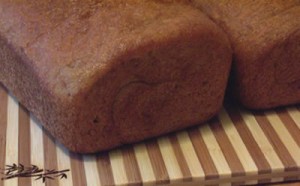
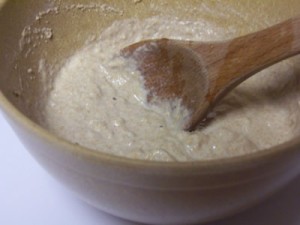
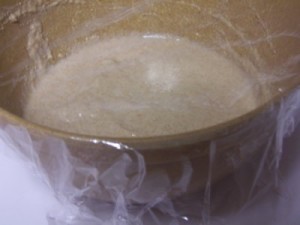
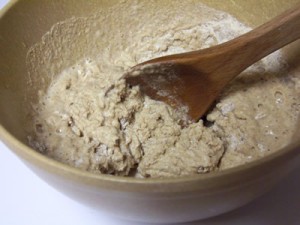
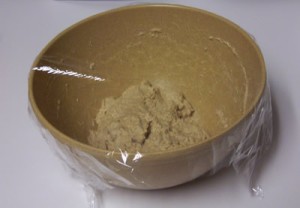
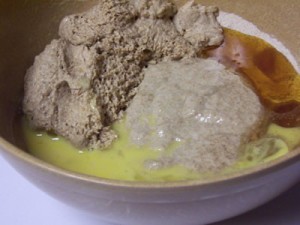
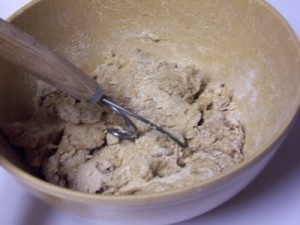
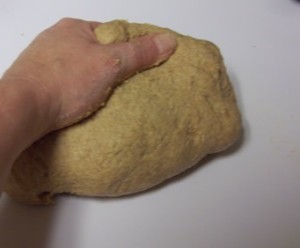
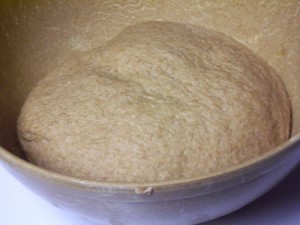
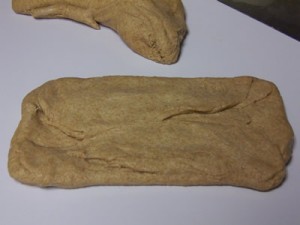
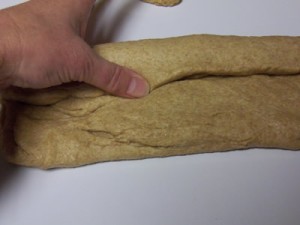
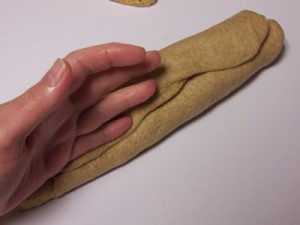
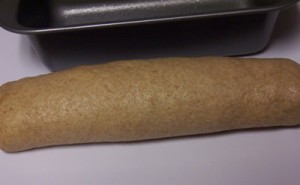
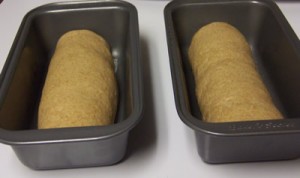
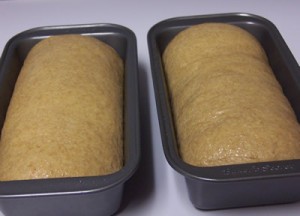
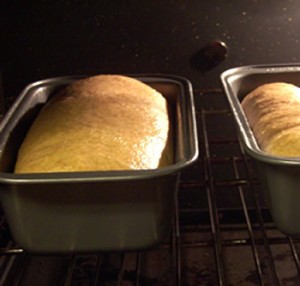
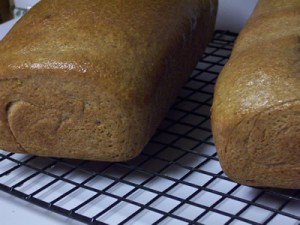

Leave a Reply